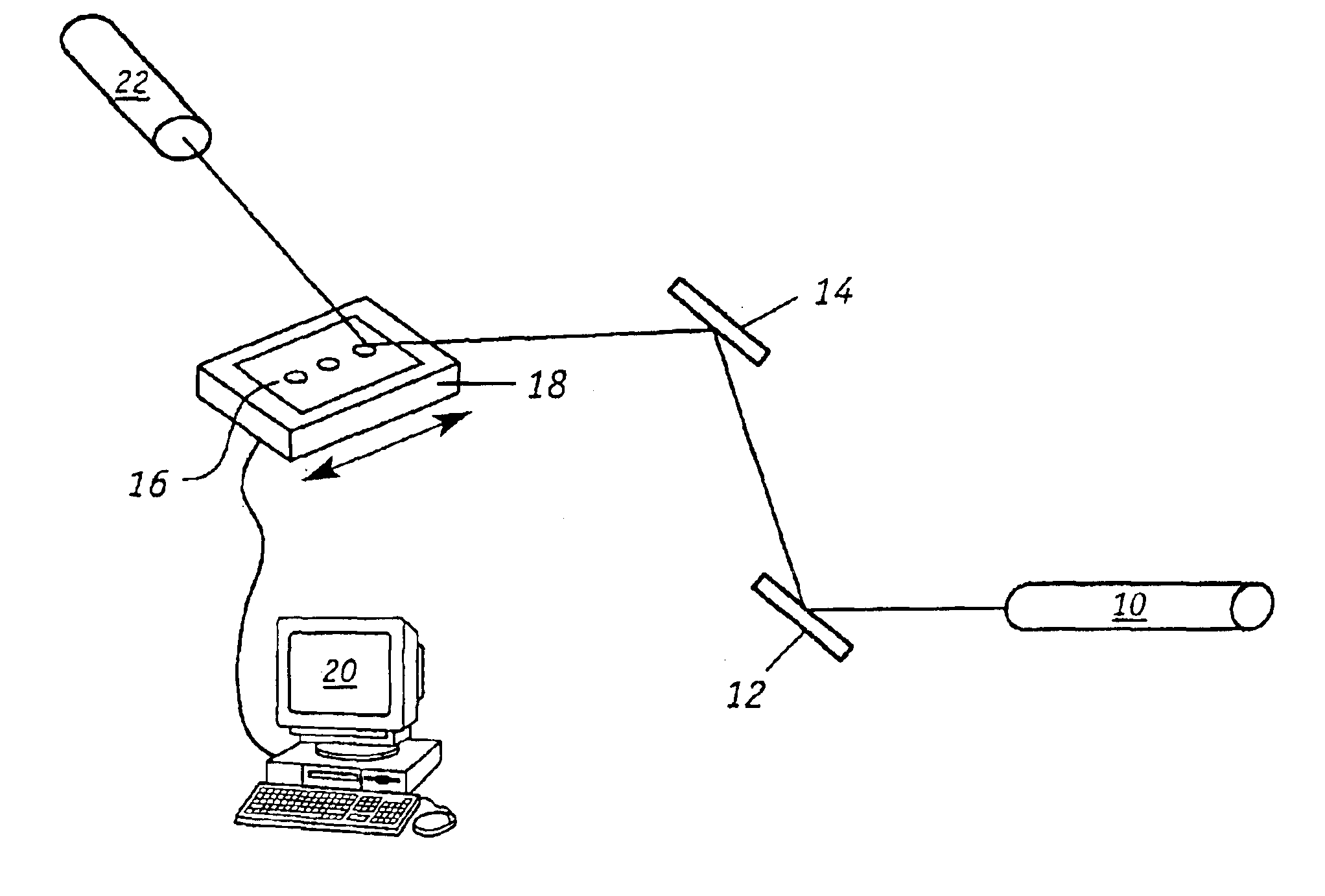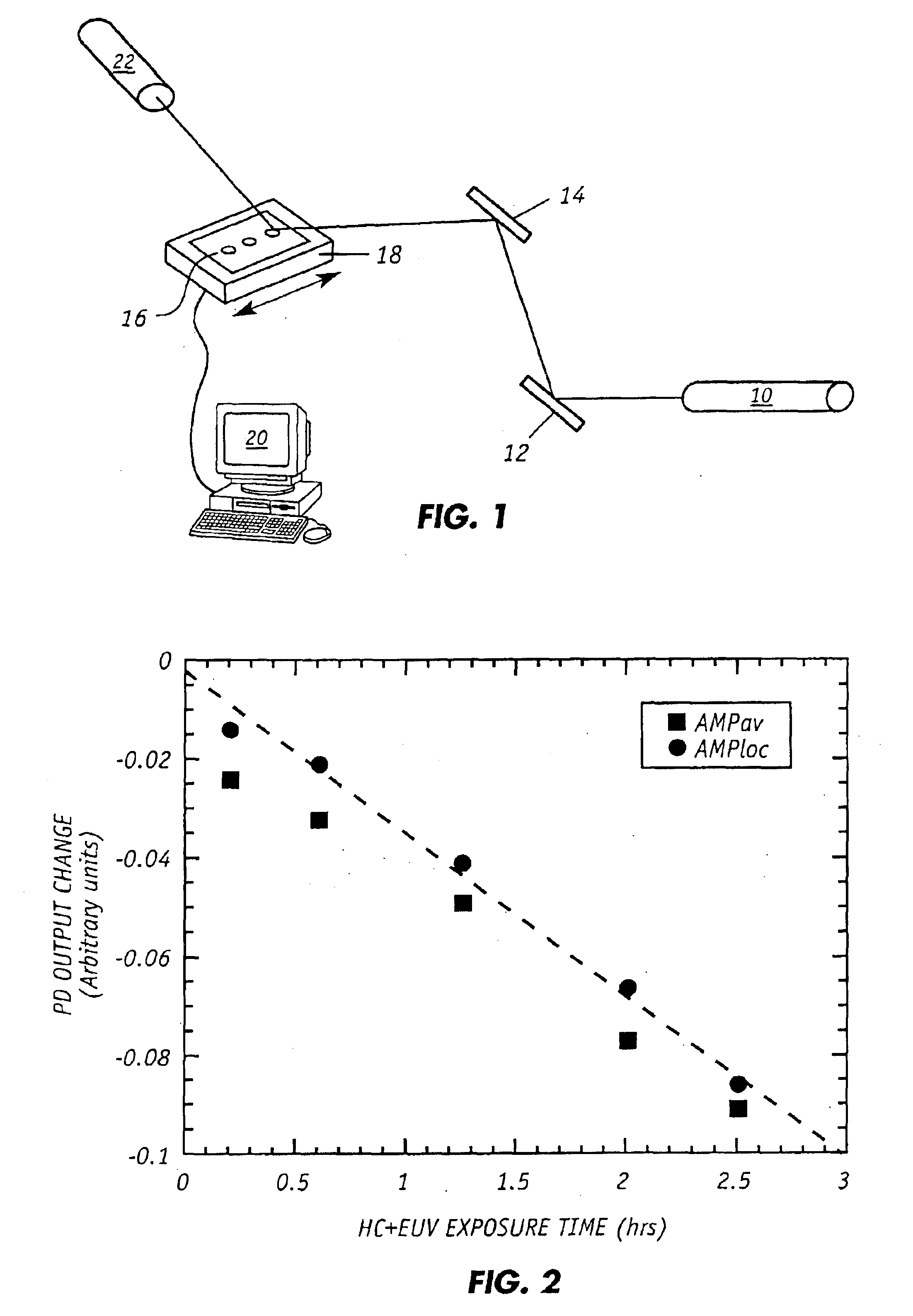Method and apparatus for detecting the presence and thickness of carbon and oxide layers on EUV reflective surfaces
a technology of carbon and oxide layers and reflective surfaces, which is applied in the direction of measurement devices, instruments, scientific instruments, etc., can solve the problems of increasing reflection intensity, and achieve the effect of reducing the intensity of reflected hene lasers
- Summary
- Abstract
- Description
- Claims
- Application Information
AI Technical Summary
Benefits of technology
Problems solved by technology
Method used
Image
Examples
Embodiment Construction
[0024]FIG. 1 shows the experimental arrangement that was employed to scan mirror samples with a coherent light source. The mirrors were coated with carbon contaminants as further described herein. As shown, light from a Class IIIA, intensity-stabilized HeNe laser 10 made by Spectra Physics, Model 117A was directed by two turning mirrors 12, 14 to strike mirror sample 16 at an angle of incidence of approximately 45 degrees. Mirror 16 was placed on a linear stage 18 which was moved manually in a direction that was perpendicular to the plane of incidence / reflection of the light. Light reflected from the mirror 16 was detected by a photodiode system 22 which consisted of a Newport 818-SL detector and Newport 1825-C detector power supply / meter. A bandpass optical filter (632.8 nm nominal) from Edmund Scientific (A30 910) was positioned in front of the photodiode detector to minimize stray light effects. Stage 18 can also be a motor actuated stage that has suitable rotational, translation...
PUM
| Property | Measurement | Unit |
|---|---|---|
| wavelength | aaaaa | aaaaa |
| wavelength range | aaaaa | aaaaa |
| wavelength range | aaaaa | aaaaa |
Abstract
Description
Claims
Application Information
 Login to View More
Login to View More - R&D
- Intellectual Property
- Life Sciences
- Materials
- Tech Scout
- Unparalleled Data Quality
- Higher Quality Content
- 60% Fewer Hallucinations
Browse by: Latest US Patents, China's latest patents, Technical Efficacy Thesaurus, Application Domain, Technology Topic, Popular Technical Reports.
© 2025 PatSnap. All rights reserved.Legal|Privacy policy|Modern Slavery Act Transparency Statement|Sitemap|About US| Contact US: help@patsnap.com


